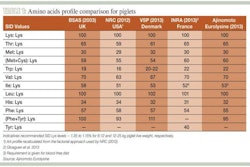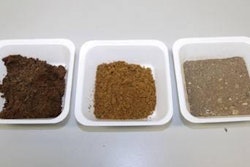
Africa is clearly headed in a positive direction and this success is reflected in the continent’s promising economic outlook. According to the African Bank of Development (BAD), Africa’s 2014 annual economic growth rate is set to rise 5.3 percent in 2014, up from 4.8 percent in 2013 – a strong performance compared with a lackluster downward trend in the rest of the world.
With a population rising from 225 million in 1950 to well over one billion today, the continent is also in the midst of a demographic explosion. With food consumption set to correlate with population growth, the future looks bright for the African feed industry. But not all is rosy. Raw material resources and production capacity cannot be extended at will. The continent is also prey to sharp variations in raw material prices and competition exists between food and feed.
This article provides an overview of feed production in Africa and the challenges it faces.
African production and imports
The rise in demand for agricultural raw materials does not mean the African feed industry has to content itself with low-quality “cast-offs.” Africa produces part of its needs in agricultural raw materials – including corn, cotton, soybeans, sorghum, fish meal and ground nuts – but the continent’s subsistence farming practices preclude self-sufficiency in terms both of quality and quantity. This is why the country relies heavily on imports for some raw materials, inside and outside Africa.
For example, Nigeria’s farming sector accounts for 44 percent of the country’s US$510 billion dollar GDP, but it imports $3 billion of foodstuffs (FAO, 2010). Meanwhile, Kenya produces one-third of the wheat it consumes.
To date, the continent’s biggest problem is the non-GMO maize ban and 100 percent duty on maize imports.
Assessing quality, addressing the mycotoxin problem
To bring its customers high-performance feed and, above all, to prevent health problems for people and animals, African feed millers need to become more mindful of the importance of input quality management.
We know fungi can have negative impacts on humans and animals – specifically the toxic effects of mycotoxins. Mycotoxin contamination is favored by stress factors during plant growth, late or premature crop harvests, and high ambient humidity and poor storage practices. A distinction can be made between crop mycotoxins, such as fumonisins, trichothecenes and zearalenone, produced in the field; and storage mycotoxins, e.g. aflatoxins and ochratoxins.
We know the presence of mycotoxins is a commonly occurring problem in Africa. Local conditions are conducive to the massive production of aflatoxins and fumonisins, but grains and raw materials imported from other countries bring with them mycotoxins specific to their place of origin. Feed millers and stockbreeders are faced with the across-the-board contamination of feed, grain and fodder.
Mycotoxin risk mitigation: The role of the African feed miller
Beyond the field, it is the responsibility of the African feed miller to decrease the impact of mycotoxins in the feed supply. Here is a list of strategies:
1. Use of improved storage structures
It is essential for feed traders and producers to set aside clean storage areas in stable environments where foodstuffs can be loaded and unloaded in an appropriate manner, avoiding needless handling and soiling. The storage areas should be regularly cleaned and fumigated. The use of a mold inhibitor could be interesting to reduce the mold development during the storage but, unfortunately, it’s useless for mycotoxins already present and not sufficient during rainy season when ambient hygrometry is very high.
2. Improved analysis
While some mold is visible to the eye, and as such suggests the presence of mycotoxins, the opposite is not the case. Raw materials with no visual blemishes or odor may very well be contaminated. This also applies to fodder crops including hay, silage and straw. The only way to know if feed is contaminated – and the level of that contamination – is through analysis. Some feed millers and integrators have the equipment to conduct this analysis themselves or outsource to laboratories.
In the latter case, particular attention has to be paid to sampling, namely by taking several sub-samples from different parts of the silo. Since mycotoxins tend to spread in a heterogeneous fashion, a poorly taken sample can lead to an unrepresentative result. Yet the majority of feed millers never make analyses. Stockbreeders and integrators are the first to find out about the contamination, signaled by a decrease in consumption, sub-par performance and diseases in their animals, sometimes even resulting in death, but very often in these cases, all the contaminated raw materials have already been consumed.
3. Using mycotoxin binders
Despite all these precautions, using a mycotoxins solution is the best way of making sure no mycotoxins are present, providing that the binder is effective and adapted to the potential contamination in hand. It is advisable to invest in a mycotoxin binder for starter and breeder feeds – a practice still not used enough in Africa. Obviously, before doing so, the balance of the ration has to be sorted out, as do health problems external to the quality of the feed.
4. Utilization of supplements, premixes
Supplement feeds, accounting for 5 to 40 percent of the final feed content, provide the premix and part of the protein necessary. This type of feed can prove useful for on-farm feed producers and also for industrial producers. The protein provided serves to make the rest of the ration secure, as this last consists of raw materials of middling or varying quality. It is the same for premix, i.e. 0.3 to 5 percent. Feed millers must check the quality of the premix.
Conclusion
Mycotoxins are a reality that needs to be addressed. Feed millers don’t have to let the mycotoxins limit the performance of the feed and the animals. The presence of mycotoxin is not easy to demonstrate, but it brings a huge negative impact on results. The solutions at our disposal should be promoted, but African feed millers have to take into account this problem in a global way.















